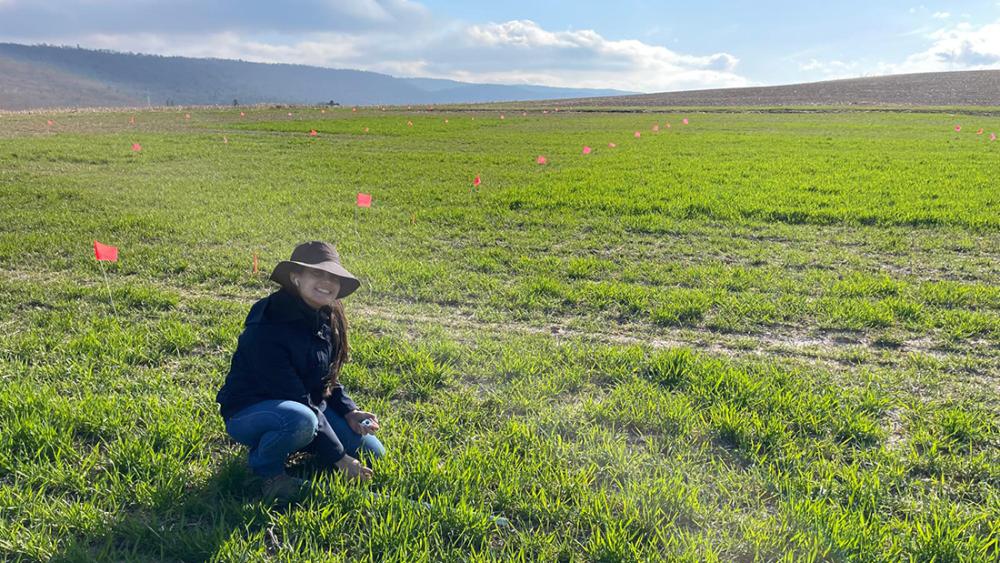Report on the Discontinuation of the U.S. Household Food Security Survey and its Impact on Sustainable Development Goals
Introduction and Policy Context
The U.S. Department of Agriculture (USDA) is scheduled to release its final annual Household Food Security report. The administration has announced the termination of this survey, citing it as “redundant, costly, politicized and extraneous.” This decision has significant implications for monitoring progress toward key Sustainable Development Goals (SDGs), particularly SDG 2 (Zero Hunger).
Implications for SDG 2: Zero Hunger
The Household Food Security report has served as a primary instrument for tracking food insecurity, a direct measure related to SDG Target 2.1, which aims to end hunger and ensure access by all people to safe, nutritious, and sufficient food all year round. The loss of this data collection mechanism directly undermines the ability to monitor and address hunger within the United States.
- 2023 Key Findings: The most recent data indicates a significant challenge to achieving Zero Hunger.
- 47.4 million people resided in food-insecure households.
- 14 million children were affected by food insecurity.
- Policy Impact Assessment: The termination of the report coincides with policy changes to the Supplemental Nutrition Assistance Program (SNAP), including new work requirements. The absence of the survey will make it difficult to measure the impact of these changes on vulnerable populations, hindering evidence-based adjustments necessary to meet SDG 2.
Repercussions for Interconnected Sustainable Development Goals
The cessation of the food security survey extends beyond SDG 2, affecting a network of interconnected development goals that rely on robust social data.
- SDG 1 (No Poverty): Food insecurity is a key indicator of poverty. Without this annual data, policymakers lose a critical tool for understanding the dimensions of poverty and crafting effective policies to eradicate it in all its forms.
- SDG 10 (Reduced Inequalities): The report provides essential data for identifying which demographic and geographic groups are most affected by hunger. Its absence will impede efforts to target interventions and reduce inequalities in access to food and economic resources.
- SDG 16 (Peace, Justice and Strong Institutions): Effective and accountable institutions rely on objective data for policymaking. As noted by Sara Bleich, Professor at Harvard T.H. Chan School of Public Health, the report has been a “consistent national benchmark.” Eliminating this “powerful source of objective information” weakens the institutional capacity for evidence-based governance, a core principle of SDG 16.
Conclusion
The discontinuation of the USDA’s Household Food Security report represents a significant setback for data-driven policymaking aimed at combating hunger and poverty. It creates a critical information vacuum that compromises the nation’s ability to track progress, understand the impact of policy changes, and effectively work towards achieving Sustainable Development Goals 1, 2, 10, and 16. The ability to craft responsive and effective policies to support the most vulnerable populations will be severely diminished without this annual benchmark.
1. Which SDGs are addressed or connected to the issues highlighted in the article?
The article primarily addresses issues related to hunger, social protection policies, and the importance of data for policymaking. Based on this, the following Sustainable Development Goals (SDGs) are relevant:
- SDG 2: Zero Hunger: This is the most directly relevant SDG, as the article’s central theme is food insecurity in the United States. It discusses the number of people in “food-insecure households” and the potential discontinuation of a key report that tracks this issue.
- SDG 1: No Poverty: Food insecurity is intrinsically linked to poverty. The article mentions the SNAP (Supplemental Nutrition Assistance Program), a social protection system designed to assist low-income individuals and families, which directly relates to poverty alleviation efforts.
- SDG 17: Partnerships for the Goals: This goal, specifically its targets related to data and monitoring, is highly relevant. The article highlights the critical role of the “Household Food Security report” as a “powerful source of objective information” for creating “responsive, effective policies.” The potential loss of this data source undermines the capacity for evidence-based decision-making, a key principle of SDG 17.
2. What specific targets under those SDGs can be identified based on the article’s content?
Based on the issues discussed, the following specific targets can be identified:
SDG 2: Zero Hunger
- Target 2.1: “By 2030, end hunger and ensure access by all people, in particular the poor and people in vulnerable situations, including infants, to safe, nutritious and sufficient food all year round.” The article directly addresses this target by reporting that “47.4 million people lived in food-insecure households in 2023, including 14 million children,” highlighting the ongoing challenge of ensuring access to sufficient food.
SDG 1: No Poverty
- Target 1.3: “Implement nationally appropriate social protection systems and measures for all, including floors, and by 2030 achieve substantial coverage of the poor and the vulnerable.” The article discusses the SNAP benefits program, which is a key social protection system in the U.S. The mention of changing “work requirements for recipients of SNAP benefits” and the risk that “millions” could lose food assistance directly relates to the implementation and coverage of this system.
SDG 17: Partnerships for the Goals
- Target 17.18: “By 2020, enhance capacity-building support… to increase significantly the availability of high-quality, timely and reliable data…” While the target mentions developing countries, its principle applies universally. The article’s core conflict is the potential discontinuation of the USDA’s “annual survey,” which is described as a “consistent national benchmark” providing “objective information.” The loss of this report would directly contradict the goal of ensuring the availability of reliable data for policymaking.
3. Are there any indicators mentioned or implied in the article that can be used to measure progress towards the identified targets?
Yes, the article mentions and implies several indicators that align with the identified targets:
Indicator for Target 2.1
- Implied Indicator: The article directly refers to the measurement of food insecurity. This aligns with Indicator 2.1.2: Prevalence of moderate or severe food insecurity in the population. The article provides a specific data point from the USDA report: “47.4 million people lived in food-insecure households in 2023.” This figure is a direct measure used to track progress against Target 2.1.
Indicator for Target 1.3
- Implied Indicator: The discussion of SNAP benefits and the number of recipients relates to Indicator 1.3.1: Proportion of population covered by social protection floors/systems. The article’s statement that changes to SNAP “could leave millions without food assistance” implies that the number of people covered by this social protection system is a key metric being tracked and is at risk of decreasing.
Indicator for Target 17.18
- Implied Indicator: The entire article is about the value and potential loss of a key national data source. This relates to Indicator 17.18.1: Statistical capacity indicator for Sustainable Development Goal monitoring. The article argues that the “Household Food Security report” is essential to “track the impact of policy changes” and ensure “decisions are grounded in evidence.” The discontinuation of this annual report would represent a reduction in the nation’s statistical capacity to monitor hunger and the effectiveness of related policies.
4. Create a table with three columns titled ‘SDGs, Targets and Indicators” to present the findings from analyzing the article.
| SDGs | Targets | Indicators |
|---|---|---|
| SDG 2: Zero Hunger | Target 2.1: End hunger and ensure access by all people to safe, nutritious and sufficient food all year round. | Indicator 2.1.2 (Implied): Prevalence of food insecurity. The article cites the specific statistic of “47.4 million people lived in food-insecure households in 2023.” |
| SDG 1: No Poverty | Target 1.3: Implement nationally appropriate social protection systems and measures for all. | Indicator 1.3.1 (Implied): Proportion of population covered by social protection systems. The article discusses changes to “SNAP benefits” and the risk of “millions” losing assistance, indicating a focus on the program’s coverage. |
| SDG 17: Partnerships for the Goals | Target 17.18: Increase significantly the availability of high-quality, timely and reliable data. | Indicator 17.18.1 (Implied): Statistical capacity for monitoring. The potential discontinuation of the “annual survey” (Household Food Security report) is presented as a loss of a “powerful source of objective information,” directly impacting the capacity to monitor hunger and policy effectiveness. |
Source: tv20detroit.com







